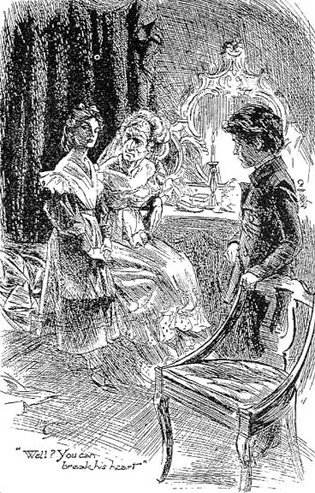Dickens took inspiration from Australia

AT THE AGE OF 31, Eliza Emily Donnithorne was at last to be married. On the day of the nuptials, the guests assembled and the wedding breakfast was laid on the substantial dining table of her home, Cambridge Hall, at 36 King Street in the Sydney suburb of Newtown.
But on that fateful 1856 morning, the groom failed to appear, and in the space of a few hours the prospect of a blissful future collapsed in disappointment and despair.
Eliza would never again leave her house. The food on her table was left to rot as the jilted bride withdrew to a life as an eccentric recluse.
Eliza’s unhappy story has always rung a familiar note with Charles Dickens’ devoted readers. Although there is no irrefutable evidence in support of the true source of his inspiration, it seems Dickens may have based Miss Havisham in Great Expectations (1861) on Eliza.
Charles Dickens links with Sydney
If the character did indeed originate in Sydney, it’s not surprising, as Dickens maintained regular correspondence with local researchers and friends who had travelled here.
Although he never visited, Dickens’ keen interest in Australia is reflected in the fate of a number of his characters.
His friendship with the penal reformer Alexander Maconochie gave him an insight into the Australian prison system. The early novels reflect the common impression of Australia as a place of banishment and punishment, but, as his prodigious output grew, Dickens saw a moral purpose for both convict and free settler making good in a new land. In Australia, the reformed felon or downtrodden poor could avail themselves of opportunities unimaginable in England.

Australian characters in Dickens’ books
Wackford Squeers, the brutal headmaster of Dotheboys Hall, gets his comeuppance in Nicholas Nickleby (1839) when he’s transported to New South Wales.
A decade later, Dickens has the greedy and obsequious Uriah Heep in David Copperfield (1850) defraud his employer, Mr Wickfield. He faces transportation for life, while his clerk, the ever-hopeful Wilkins Micawber, who exposes his boss’s fraudulent acts, eventually emigrates to Australia, where he emerges as an affluent free settler, manager of the Port Middlebay [Melbourne] Bank, and a respected magistrate.
Adding to the image of Australia as the ultimate land of opportunity, Abel Magwitch is condemned in Great Expectations to transportation for the term of his natural life. But in NSW he becomes a wealthy sheep farmer and the hero Pip’s secret benefactor.
For Dickens, the common themes of crime, class and redemption find the perfect literary vehicle in an Australia evolving from a jail to what he perceived as a truly egalitarian society.
In the real world, Dickens supported Anglo-Australian philanthropist Caroline Chisholm through articles in his popular journal, Household Words (1850-59).
Dickens’ family emigrated to Australia
He was also acquainted with Samuel Sidney: journalist, anti-transportation activist, promoter of emigration and author of the influential Australian Hand-Book: How to Settle and Succeed in Australia. Sidney became a regular contributor to Household Words. From convicts, to tales of new settlers, life at the frontier, on the gold diggings, or at sea, some 100 articles published in Household Words related directly to Australia at a time of great social and economic change. They moulded conceptions of the nation, both in Britain and the colonies where the journal was widely read.
Charles Dickens actively encouraged two of his 10 children to emigrate. Alfred Dickens became a stock and station agent in Victoria, while Charles’ youngest, Edward, became a station manager, civil servant and member of the NSW Legislative Assembly.
Edward died childless and Alfred’s daughters emigrated back to Britain in the 1920s. As a result, none of Charles Dickens’ descendants remain in Australia today.
But in 2012, this bicentenary year of the birth of the greatest English novelist of the 19th century, Dickens’ literary links with Australia live on through his many fictional emigrants to the bright land of new beginnings.
Source: Australian Geographic, Issue 110 (Sep – Oct, 2011)




